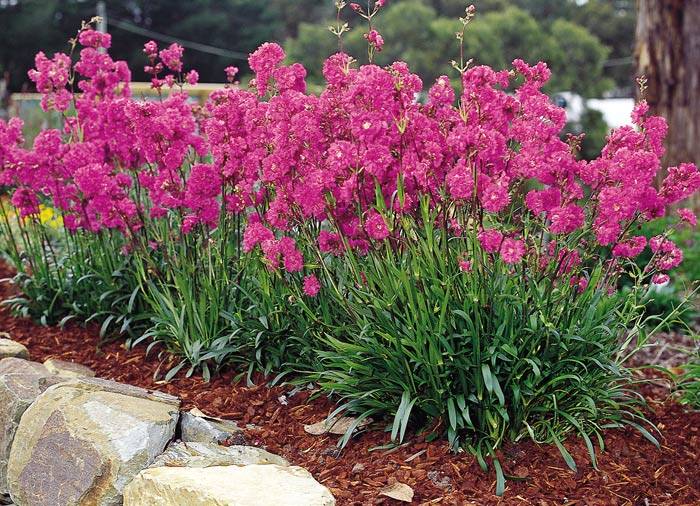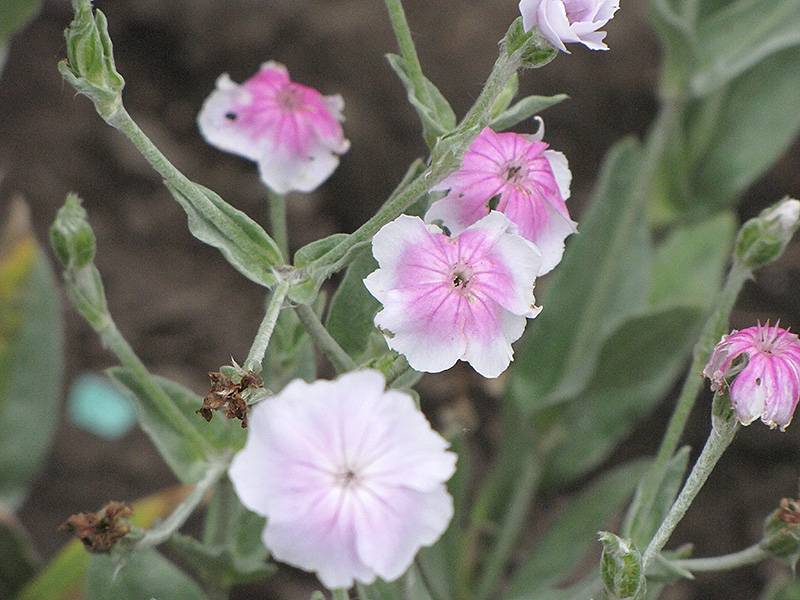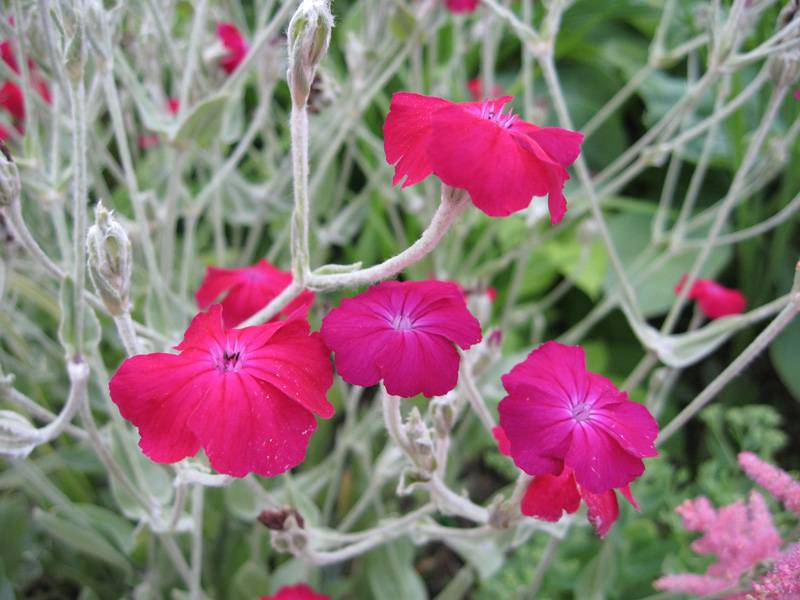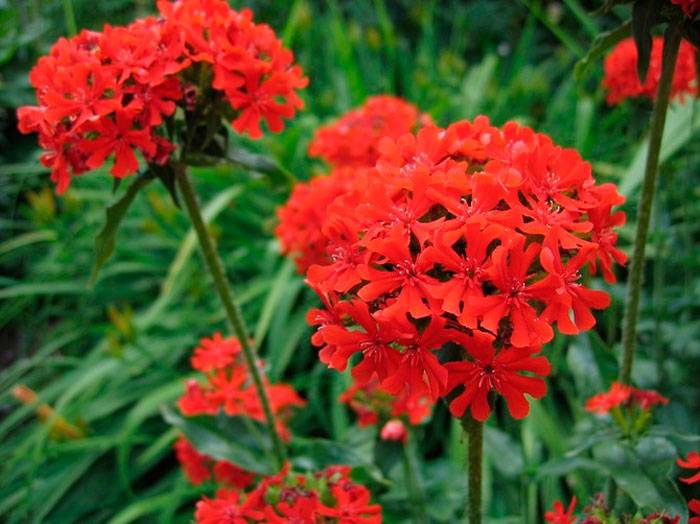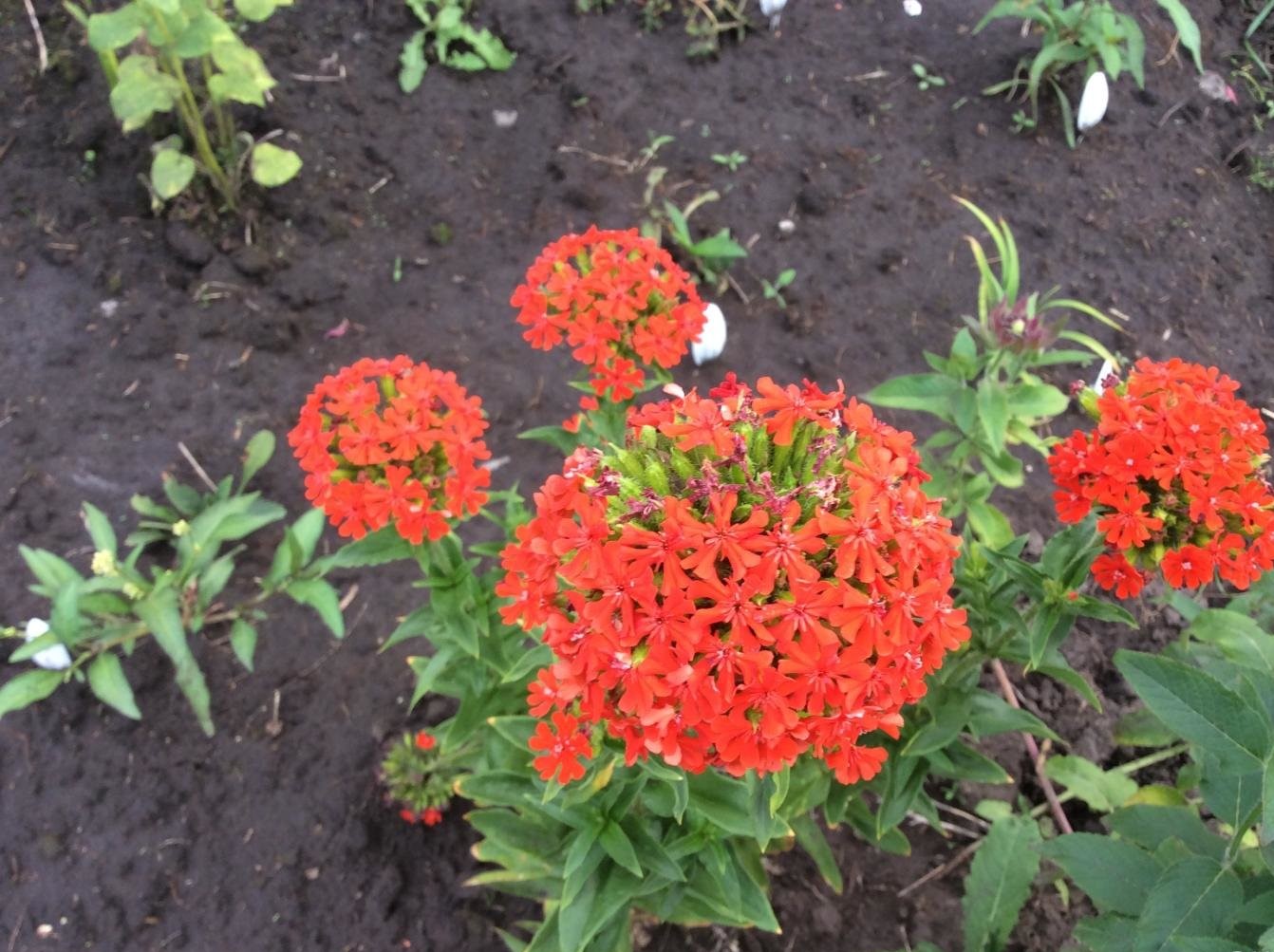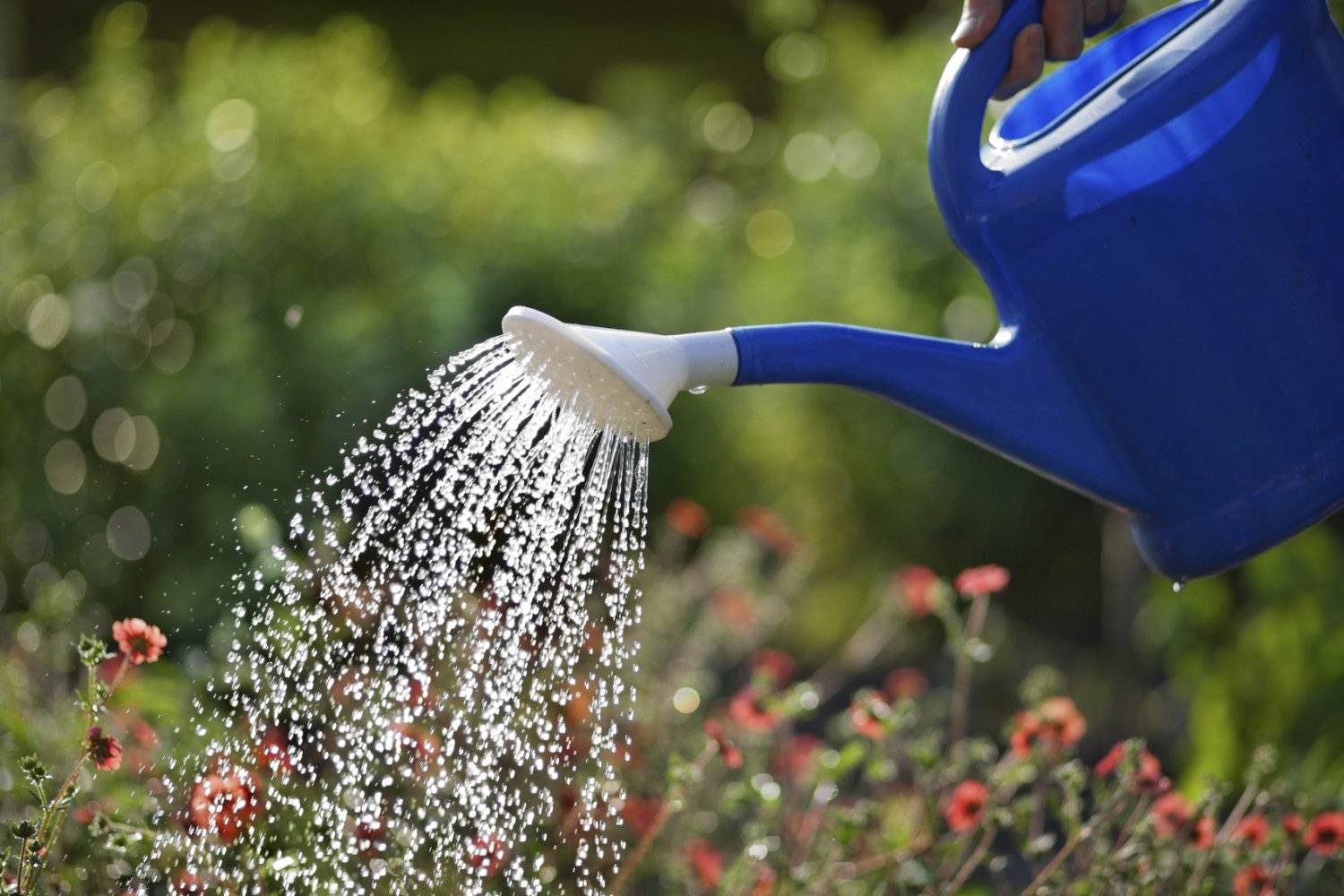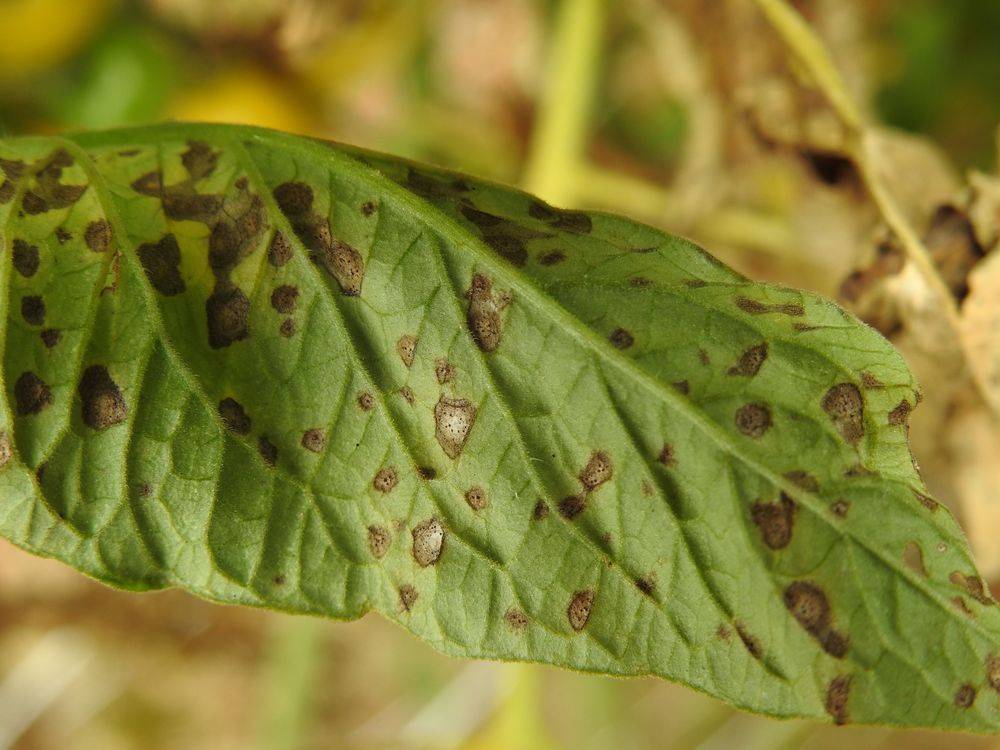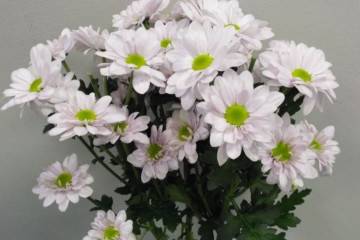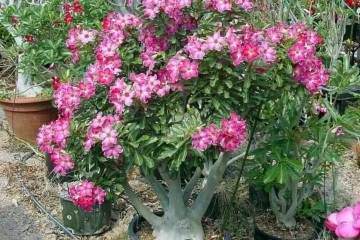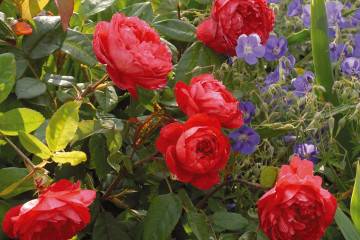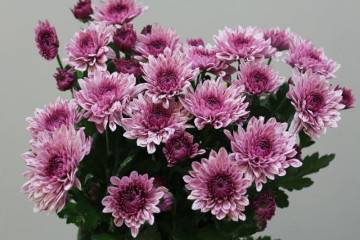Lychnis crown (Lychnis coronaria) - raspberry, dark pink color
Content:
Lychnis crown is a perennial flowering plant that fits perfectly into garden and park areas. The shrub comes in many different varieties with a color palette of buds that include vibrant and rich shades of pink and red.
What does crowned lychnis look like?
Although this type of lychnis is classified as a perennial plant, the bush has not been growing in all regions of Russia for several years. In fact, it is a biennial, so it is important to have time to propagate the bush in time so as not to be left without a flower. Many varieties of this subspecies are widely used in landscape design due to the variety of bud colors.
The flower got its name because of the inflorescences, which the ancient Greeks identified with wicks. Literally, the word "lichnis" is translated from Greek as "lamp" or "light". The crown-like species has been cultivated since the 16th century; the cultivation of the plant at home in northern Europe was especially widespread.
The plant reaches a height of no more than 1 m, it grows in breadth by about the same distance. The spreading bush has straight branchy shoots, on which there are small oval leaf plates of a silvery-green color. The color of the foliage and stems is the same and seems velvety to the touch.
The most popular varieties of Lychnis coronaria
At home, a total of about 15 varieties of crown lichen are cultivated. However, breeders increase this figure every year, bringing out more colorful and frost-resistant hybrids.
Angels Blanche
A low shrub with a height of 60 centimeters. When the buds are just starting to bloom, they are completely white, then they become crimson.
Mysterious Island
Unlike other varieties, it has small flowers that are colored from pink to burgundy. Possesses high frost resistance, therefore it easily tolerates winters.
Gartner Wonder
The variety is distinguished by petals twisted into a tube, which are painted in a uniform bright scarlet color. The paniculate inflorescences of the variety form spherical inflorescences and are located at the very top of the shoots.
How crowned lychnis reproduces
Most often, the plant is propagated by sowing seeds and rooting cuttings. But it is worth noting that some varieties take root well only through seed propagation, while others, on the contrary, only by cuttings.
Growing from seeds
Lychnis can reproduce itself with the help of its seeds, this method is called self-seeding. When the seeds fall into the ground in the fall, they are hardened during the frost and germinate easily in spring. In this case, you just need to transplant lateral young shoots.
If the seeds are to be immediately planted in open ground, then this procedure must be carried out in March or April, it all depends on the region. The main thing is that the earth is thoroughly warmed up and frosts are avoided.
When sowing in boxes, the procedure is carried out in late January or early February. Fill the box half with a nutritious substrate and deepen the seeds into it by 1-2 cm. From above, the boxes are covered with foil and placed on a lighted windowsill.
The substrate for planting should be light, breathable, not oversaturated with fertilizers. To cook it yourself, you will need:
- fertile loose land;
- river sand for drainage;
- some humus, compost or peat as organic matter;
- superphosphate or other mineral fertilizer required for growing lichen.
Seedling care consists in regularly moistening the soil and airing it with a seedling. If the seedlings have begun to fade, then it is worth taking care of additional lighting. To prevent moisture from stagnating in the soil, if possible, you need to carefully loosen the ground.
For transplanting bushes, a special substrate is prepared from river sand, ordinary loose earth, humus and superphosphate. The holes are dug at a distance of 60 cm from each other, then their bottom is covered with a layer of drainage material. A small layer of substrate is distributed from above and the seedlings are placed in the pits. To sprinkle the bushes, they also use a nutritious substrate, carefully tamp the soil and wate it with settled water.
Landing in open ground
Before planting seedlings in open ground, you must first find the ideal place for growing. You need to look closely at open spaces that will be constantly lit. The big plus is that the shrub grows well on any type of soil.
Cuttings
Cuttings are cut before the flowering of the bush. They must be at least 15 cm long and contain at least 3 leaves. These scraps can be planted directly in open ground. In a slightly shaded area, they dig up the earth and bring humus and superphosphate there. Then cuttings are buried there. From above you need to cover them with a plastic cap, you can use a film. Periodically you need to moisten the soil. When all the cuttings are rooted, they are transplanted to a permanent place.
Features of care in the garden
It is not as troublesome to care for crown lichen as for the rest of the flowering bushes. The main thing is not to miss the necessary measures and to identify diseases or pests in time.
The plant thrives on open spaces with light soil. Lichnis is not particularly picky about the acidity of the soil, but heavy loamy soil is still not recommended for cultivation.
Watering
The plant tolerates dry periods well and does without frequent watering. One watering per week is enough, and during rainy periods it is better not to water the bush at all. The water must be of good quality: free from impurities and not cold. Before watering, it is better to let the tap water sit in the sun for 4-5 hours.
Priming
The land should not be oversaturated with fertilizers; it is better to apply organic matter once a year.For the normal growth of the bush, the soil should be as light as possible with good air permeability.
Top dressing
Top dressing is carried out very rarely, three dressings per summer are enough. All top dressing should be directed only to the abundant flowering of the bush, and not to a set of deciduous mass. The first fertilization is carried out closer to summer, potassium sulfate and superphosphate are applied. These drugs are diluted in water and watered at the roots of the bush. The next two dressings are carried out with the same preparations.
When and how it blooms
Lychnis crown blooms very brightly and profusely, which attracts florists.
Types of flowers
The buds of Lychnis crown are painted in a bright crimson color closer to the stamens, and the edges are scarlet. This color is recognized as the standard of this species, but there are other flower colors: white with pink, red and burgundy.
Flower shapes
Inflorescences are located singly at the tops of the branches. Each bud has 5 round petals. After flowering, they do not fall off together with the flower, separately, like the leaves.
Flowering period
Lychnis bloom is quite long, it has a blooming appearance for 3 months. The bush begins to bloom the buds in mid-June, and fades in November. In more southern latitudes, flowering can be even longer.
Possible growing problems
As a rule, problems in the cultivation of crown lichen arise due to inattentive care and the introduction of infections into the soil. The bush especially suffers from waterlogging of the soil.
Pests
The plant is often affected by parasites that feed on the juices of the bush. Among them are:
- leaflet. It sucks out juices from shoots and leaf plates, which is why they begin to dry out;
- aphid. Eats leaves, causing them to dry out and fall off;
- spider mite. Viet webs and stops the growth of the bush.
At the earliest stages of the spread of pests, they can be completely removed with a simple folk remedy - a solution of soap. But if a lot of damage is done, you need a stronger remedy - an insecticide for aphids and leafworms and an acaricide for a spider mite.
Diseases
Diseases affecting the bush:
- rust - the appearance of brown and yellow spots on the leaves;
- root rot - rotting of the root system and trunk;
- spotting - the appearance of dark spots on the leaves.
To fight disease, you need to treat the bushes with fungicides.
Signs of improper care
If the care of lychnis is disturbed, then the following signs are observed in the bush:
- rare flowering or lack thereof. Occurs due to lack of lighting and oversaturation with fertilizers, especially nitrogen-containing ones;
- lack of growth and loss of brightness in stems, leaves and buds - lack of certain minerals in the soil, especially iron;
- decay of roots and stems. The reason is the freezing of the bush or over-watering.
Use in landscape design
Lychnis crown will give a lot of bright colors to any, even the most inconspicuous, garden plot. Looks good in flower beds and flower beds with other varieties. Bushes are often planted along paths and paths. The plant looks beautiful when decorating alpine bitters, near benches or lanterns. Lychnis is also recommended to be grown next to low flowers:
- chamomile;
- bells;
- phlox;
- asters;
- violets.
Planting and caring for lichenis crown is not easy, but the end result will be worth it. A beautiful, abundantly and brightly flowering plant will surprise the owners with its colors.
